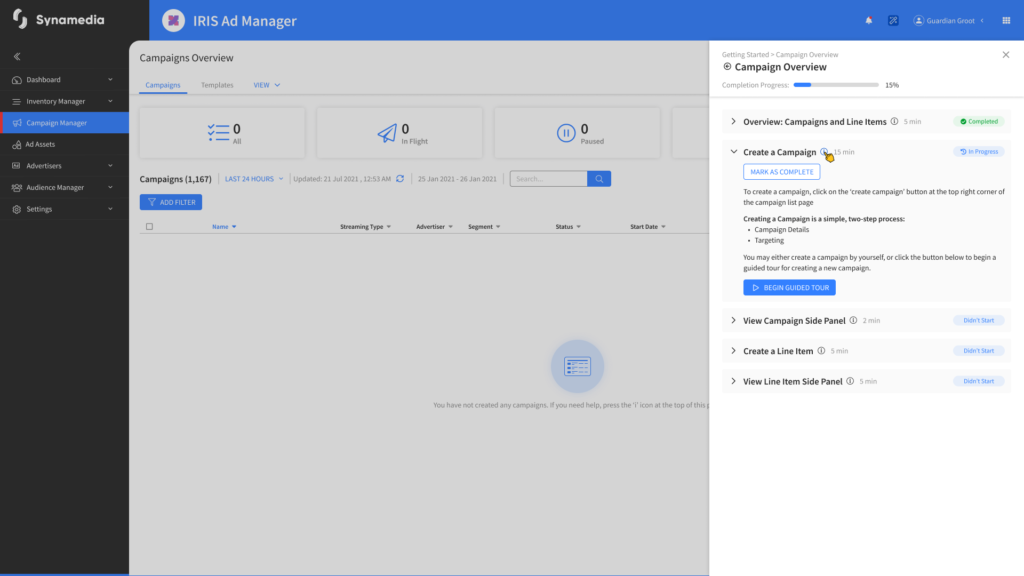When we talk about user experiences in the digital world, a user’s first impression is definitely an important parameter. Because of the great abundance of apps and websites on the market, it is extremely important to give users the best experience possible when they first use your product, simply because otherwise they will abandon your product and move to competitors (which in many cases include several options). Therefore, we strive to create a great experience when users first enter and get to know your system — also known as an onboarding experience — in a way that is most suitable for your users. But how do you do it? That’s exactly why we’re here, to present the way we believe onboarding processes should operate and also to give some examples from projects we’ve done in the past.
Understanding the User
As with any project we work on in the studio, we first sit and listen. We begin by setting up a number of meetings with a potential client’s with the goal of learning a little about their existing (or emerging) product, about the needs in the field that are not being met today, and how in their vision for their system comes to meet these needs. We like to hear in as much detail as possible how clients describe the expected users of their system, and what leads their users to act the way they do. As we introduce ourselves to the world of the client, we are interested in learning anything and everything there is to know about the client’s field, their users, and more.
Onboarding and how it fits into the product
Onboarding is the preliminary step to starting work in a system and it a variety of goals, which differ in essence. Below is the range of topics which a typical onboarding will cover:
- Welcome and Registration: The onboarding process often begins with a warm welcome message or a guided tour that introduces the platform’s value proposition. New users are asked to register and create an account.
- Guided Tour or Tutorial: To help users get started quickly, an interactive guided tour or tutorial introduces the platform’s core features and functionality. This may highlight essential buttons, menus and options, providing a hands-on experience.
-
Setting up a user profile: Encouraging users to complete their profile helps personalize their experience and may enable personalized recommendations and content.
- Contextual help and tooltips: Contextual help and tooltips can provide on-the-spot guidance as users navigate the platform, offering explanations for specific elements and actions.
- Sample Data or Dummy Content: On some platforms, using sample data or dummy content allows users to explore and interact with platform features before using their real data.
-
Progress indicators: For multi-step onboarding processes, progress indicators let users know where they are in the onboarding journey, reducing uncertainty and frustration.
- Interactive demos and interactive elements: Interactive elements, such as sliders, buttons or checkboxes, can encourage users to actively participate in the opt-in process, making it more engaging and memorable.
-
Personalized recommendations: Based on the user’s preferences and interactions during the opt-in process, the platform may offer personalized recommendations or offers tailored to their needs.
- Highlight key features: Important features and unique selling points are often highlighted during onboarding to showcase the value and benefits of the platform.
- Gather Feedback: The onboarding process is an opportunity to gather user feedback and identify pain points or areas for improvement.
- Customer support information: Providing access to customer support channels or FAQs helps users resolve issues they may encounter during an onboarding experience.
This list can be divided into two main aspects – one emphasizes learning the user’s preferences and matching them in the best way for their needs, and the other focuses on teaching users how to operate the system. Not every system will need to perform both steps, and there are systems that will not need an onboarding process at all. Usually, such a process is only characteristic of systems that have many initial settings which are important to set up. Another use case includes teaching users how to navigate and orient a complex system. Just like on a first date when two people meet in a cafe or bar and get to know each other through a conversation that sometimes involves questions and answers, so too is the relationship between the system and its users — a real tango for two.
Preference learning phase
System training for users
This step can be performed in a variety of ways – whether it is through creating a checklist of first tasks to be performed (sometimes practical experience is the best way to learn, of course with close training), or through the use of tooltips that highlight specific components and provide a brief explanation of their use. We can of course combine a variety of tools together and create a wider training set. We would like to answer several questions in this phase. For example, does the user have to go through this process only once or is there a need to return to the process in the future to examine it a second time? What are the tasks that are highly prioritized in terms of importance in the system but are the most difficult to understand (to which we would like to provide the most initial answer in our training)? And so on and so forth…
Reference database in the studio
We will reveal a little secret to you here. Because onboarding processes are very similar in nature and involve similar elements in every system we work on, our studio’s UX research team have created a very large database of references from all kinds of worlds of applications, websites and complex systems, and update it once in a while. The purpose of the database is to facilitate our process, and also the process that our customers go through, with the aim of refining together the general direction in which we would like to turn. We will always want to examine a variety of existing solutions on the market in order to check whether they meet the needs of our system. Most of the times we draw inspiration from several sources and create one onboarding process that meets the needs of our specific customers in their specific system. The construction process is done together with the customer, who we show a variety of options and together with them aim to understand what is the right direction for his specific product.
You have to remember – users are used to certain rules of a system, so even in the onboarding process we would like to conventions that are familiar and comfortable to them as much as possible. Of course, we would also like to surprise, to bring our innovative side, but we do it in the right dose and at the right time for the user who is first onboarding into the system.

















